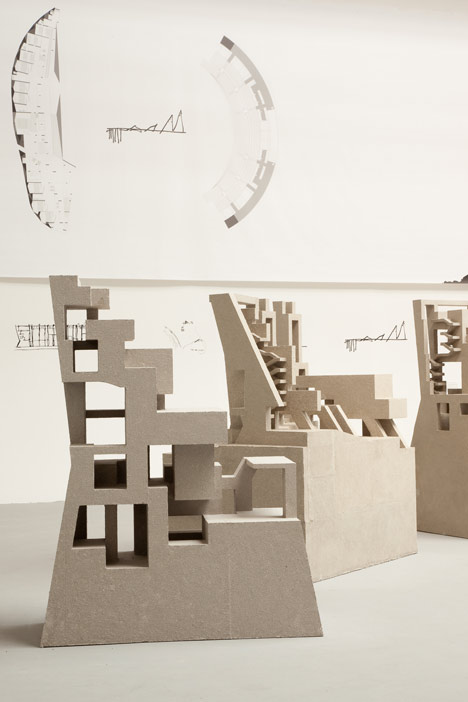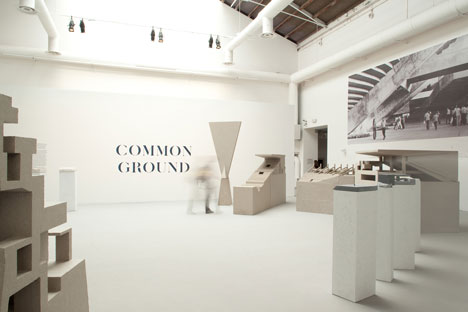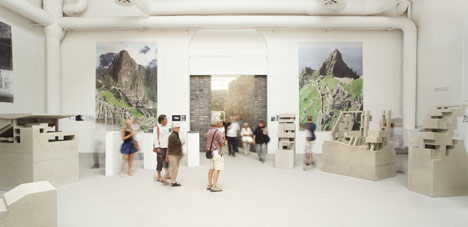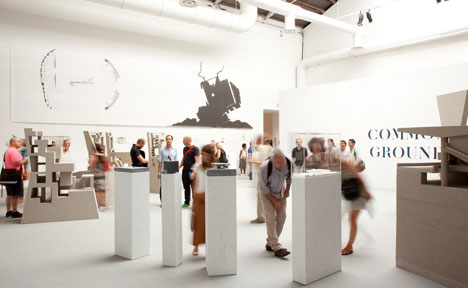Architecture as New Geography by Grafton Architects
Irish studio Grafton Architects have acknowledged the influence of celebrated Brazilian architect Paulo Mendes da Rocha on their work by constructing models of his buildings at the Venice Architecture Biennale.

"When we received the invitation to exhibit, we had just won an architectural competition for a new university in Peru," explained director Yvonne Farrell. "We acknowledged our influences from South America and on this basis we took the opportunity of celebrating the inspirational quality of the work of Mendes da Rocha."

The large papier mache models show details from da Rocha's Serra Dourada football stadium in Brazil, while smaller limestone models show details from the architect's Sao Pedro Church in São Paulo and his urban design project for Montevideo Bay in Uruguay. These are presented alongside others showing Grafton's proposals for the University of Lima and for a School of Economics in Toulouse, France.

The models are surrounded by images of the football stadium, as well as photography depicting landscapes from Machu Picchu and from the Irish island of Skellig Michael.

Grafton Architects were awarded the Silver Lion for most promising practice at the biennale.

See all our coverage of the Venice Architecture Biennale »

Photography is by Alice Clancy.

Here's a short description from the exhibition:
Architecture as New Geography
Irish practice Grafton Architects used the invitation of the biennale to open up a new conversation with an architect whose work they had long admired: Pritzker Prize winner Paulo Mendes da Rocha. Grafton Architects recently won a competition fo r a university in Lima, Peru, and looked to Mendes da Rocha’s work for cues on how to build for the particular climatic conditions of this place.

After a dialogue with the Brazilian, Grafton made models of selected works focusing on his Serra Dourada Stadium project: an homage that becomes a piece of design research for the idea of the university as an arena of learning, working with Mendes da Rocha’s idea of architecture as new geography.

This exhibition demonstrates how openness to influence is a starting point, and a prerequisite for good architecture. In this sense, this room exemplifies the theme of this year’s biennale.